The Amazon – Day 1 – First Hike in the Jungle
November 23, 2010
Our day started with our jungle guide showing up at the hotel. His name was Weninger. I had chosen him specifically since I had found great reviews on the net from others who had had him as a jungle guide. When planning for the voyage I had an email exchange with Paul Beaver, the founder of Amazonia Expeditions, the travel agency we are using in Peru. They own the lodge we were going to. I am reading Paul´s book about the history of Amazonia Expeditions, he has been through some stuff. He grew up in poverty in the US and his parents worked hard for him to go to university. He did not thrive there and as an indirect result was divorced from his wife and separated from his children. He went to the Amazon to find peace and wilderness and then went on to found the company.
We were told the night before that Weninger would have breakfast with us to get to know us before he would follow us on the boat ride up to the lodge. When he showed up he seemed a bit shy. He did not have breakfast with us.
After our breakfast he brought us on a mototricycle taxi ride to a nearby port where a boat arrived to pick us up. We got another impression of Iquitos and its busy traffic.

Busses here do not have windows.
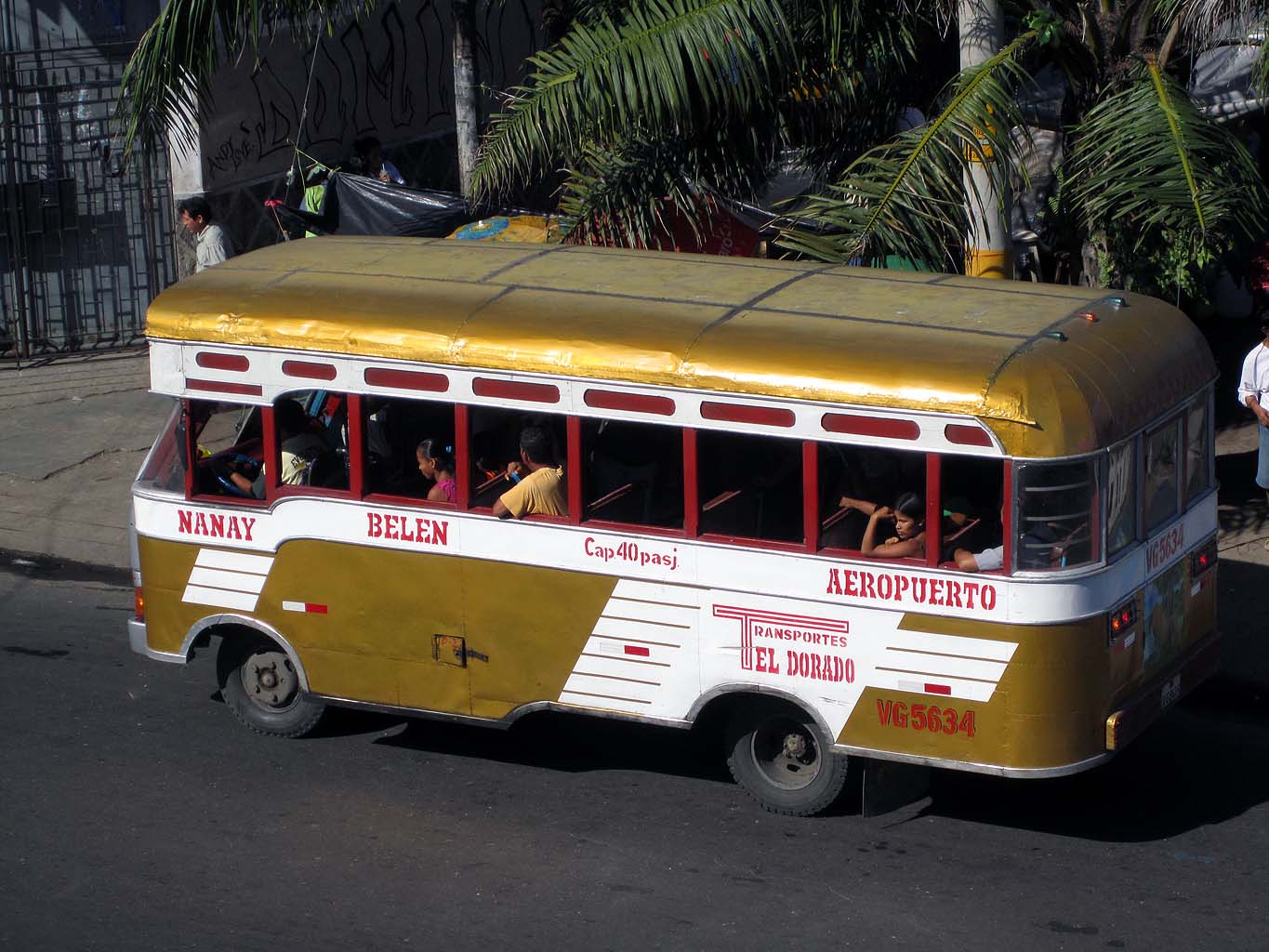
Construction comes in many different qualities:

Our luggage was carrried down to the port



where our boat arrived:
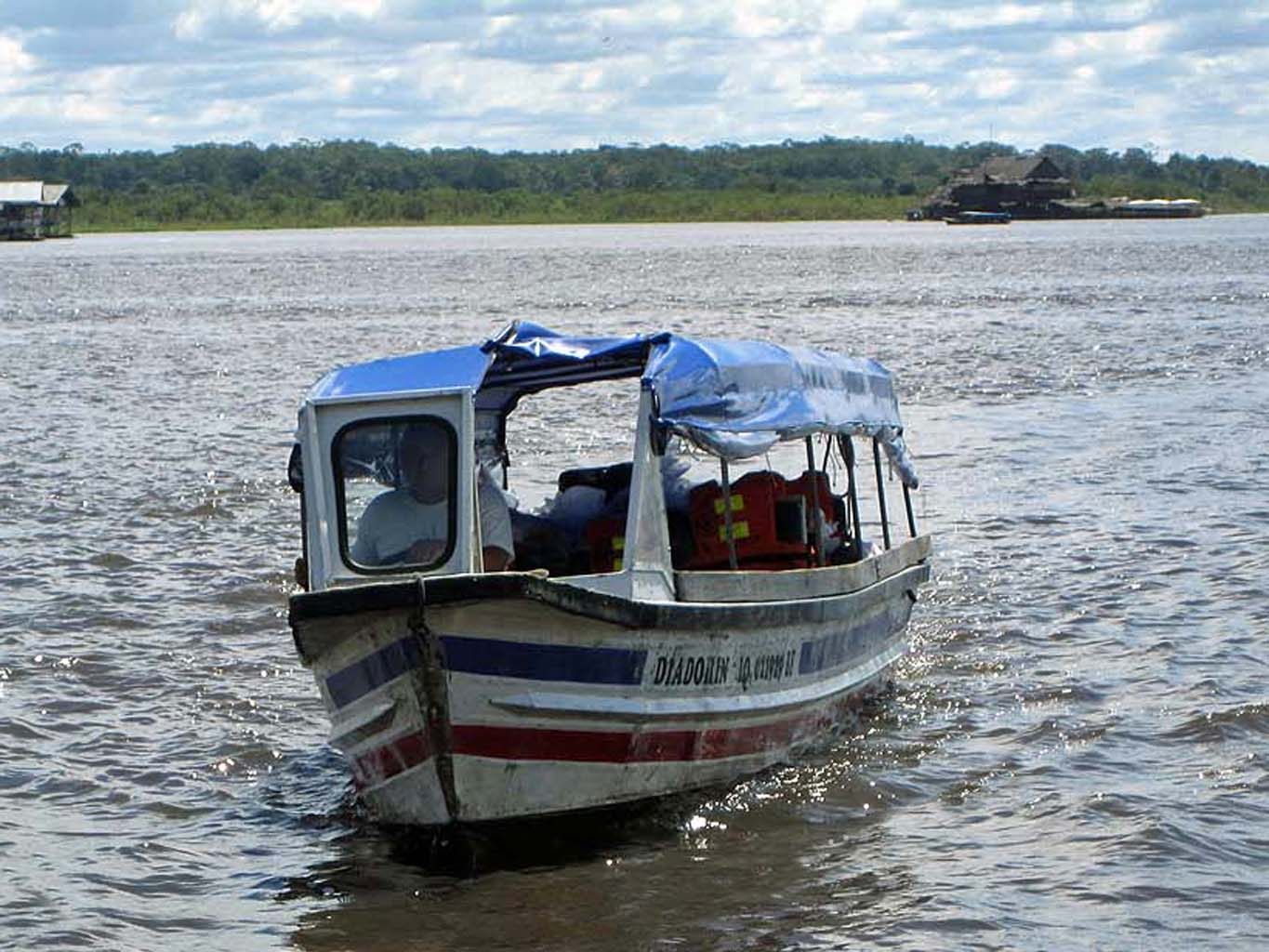
We drove up the Amazon river for 2 hours followed by about an hour on the Tahuayo river.

We were 3300 kilometers by boat from the Amazon delta and the Atlantic ocean. Yet, the Amazon river was already very wide. Our altitude was roughly 100 meters (330 feet) above sea level. 100 meters in 3300 kilometers is pretty flat, giving an average drop of only about 3 centimeters per kilometer. We were not expecting any water falls, in other words. Depending on the water flowing in from side rivers the Amazon changed color drastically several times:
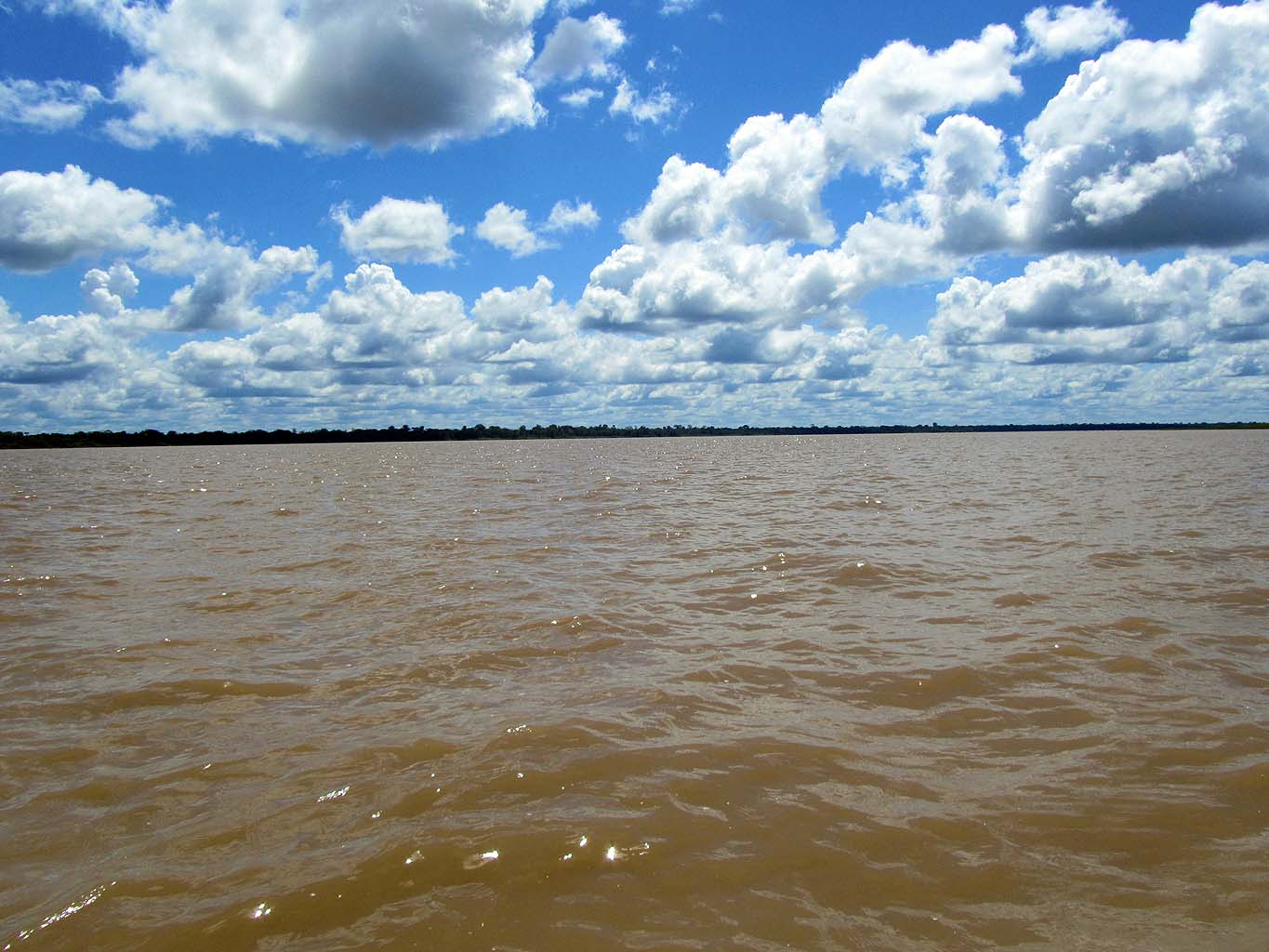

Here a side river with clean water created a divide which lasted several hundred meters:

There is a public boat transportation system that transports people and goods. Many villages are dependant on this, much like the coastal steamer (hurtigruta) has been the major transportation option for people along the coast of Norway. The roof is used for transporting of all sorts of stuff, including pigs:

It was pretty clear from many of the boats that rapids, water falls and big waves are not a problem here:

As you can see this extremely low boat even transports a car in the front:

Our driver had engine trouble with oil pressure falling dangerously low all the time. Whenever the alarm went off we would need to stop, about every 10 minutes. Half way up our stretch of the Amazon river we stopped at a trading post to rest and fix the problem:

We saw lots of gray fresh water dolphins in the water just outside the trading post. Unfortunately they were impossible to catch with the camera.
Some people were stocking up on supplies:
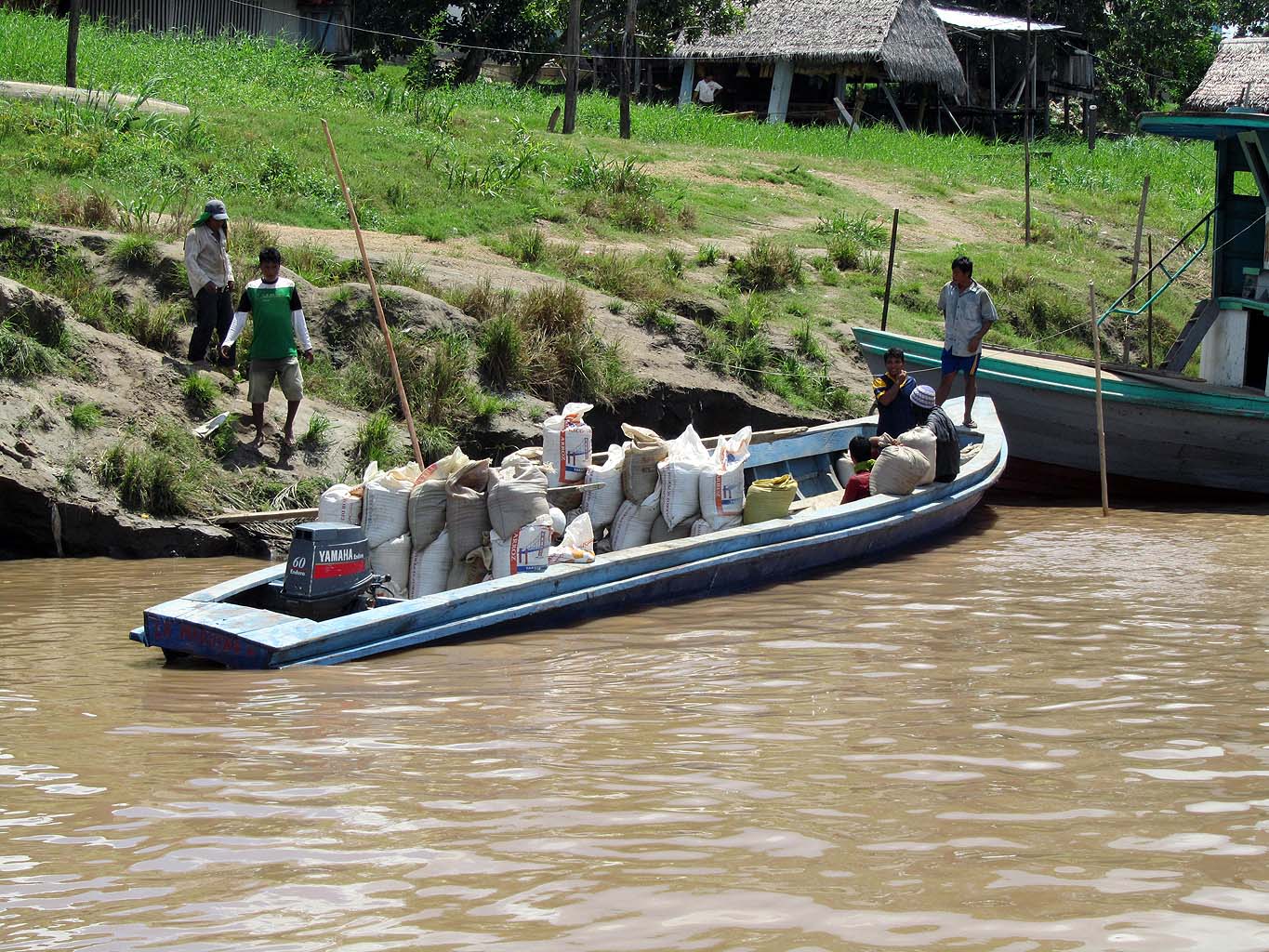
There was a small café at the trading post, basically 4 walls, a counter, a back room (presumably with a kitchen) and one table with a bench on each side. They did their dishes in the Amazon river:

As we made our way up the Tahuayo river traffic became less dense and the river narrower. We stopped at a local clinic that has been sponsored by a charitable organization started by the owners of Amazonia Expeditions. The clinic has 2 full-time nurses and was originally meant to serve 11 local villages with a total population of about 1000 people. On average they treat 16 people per day, a number that is increasing, since more and more patients are coming from further away. We had donated to the clinic when booking our stay. The leader there could tell us that general health in the area has improved much since they started their operations. An important part of their work is information about how diseases spread. They also do vaccination tours of the villages.

The kids found it a bit boring to be listening to adults talking about health and vaccinations in English and pseudo Spanish. They found some other kids to play with. As is often the case with kids contact was instant and they had a good time together.When we left the local kids came down to the shore to wave good-bye.
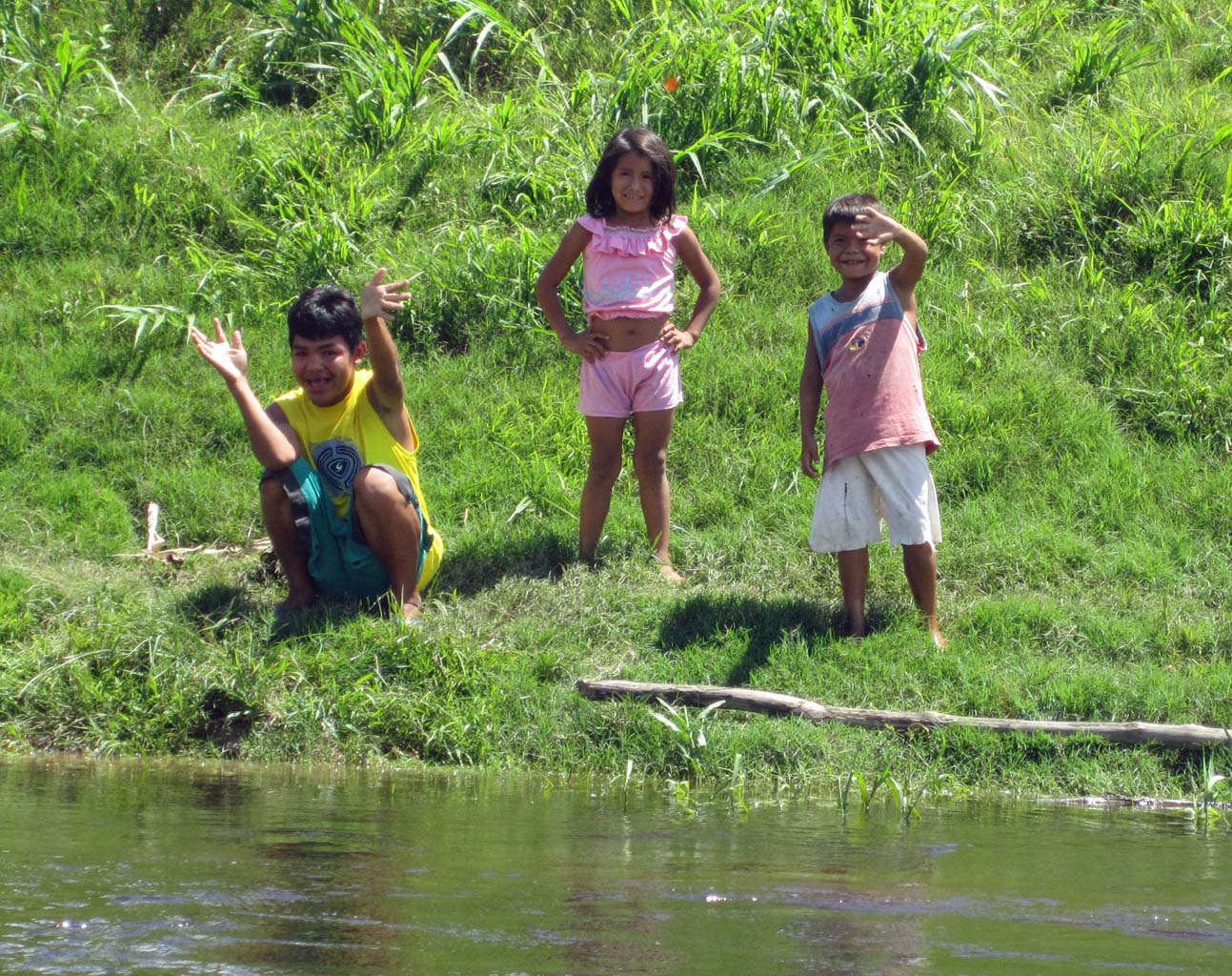
Just before our destination we had to stop by a police station. Weninger went inside with copies of the signature pages of our passports. Everyone entering the Tahuayo national reserve is registered. Here is the police station:

The lodge is actually just outside the national reserve.
At last we arrived at the lodge; our home for the next 5 nights (photo taken a few days later).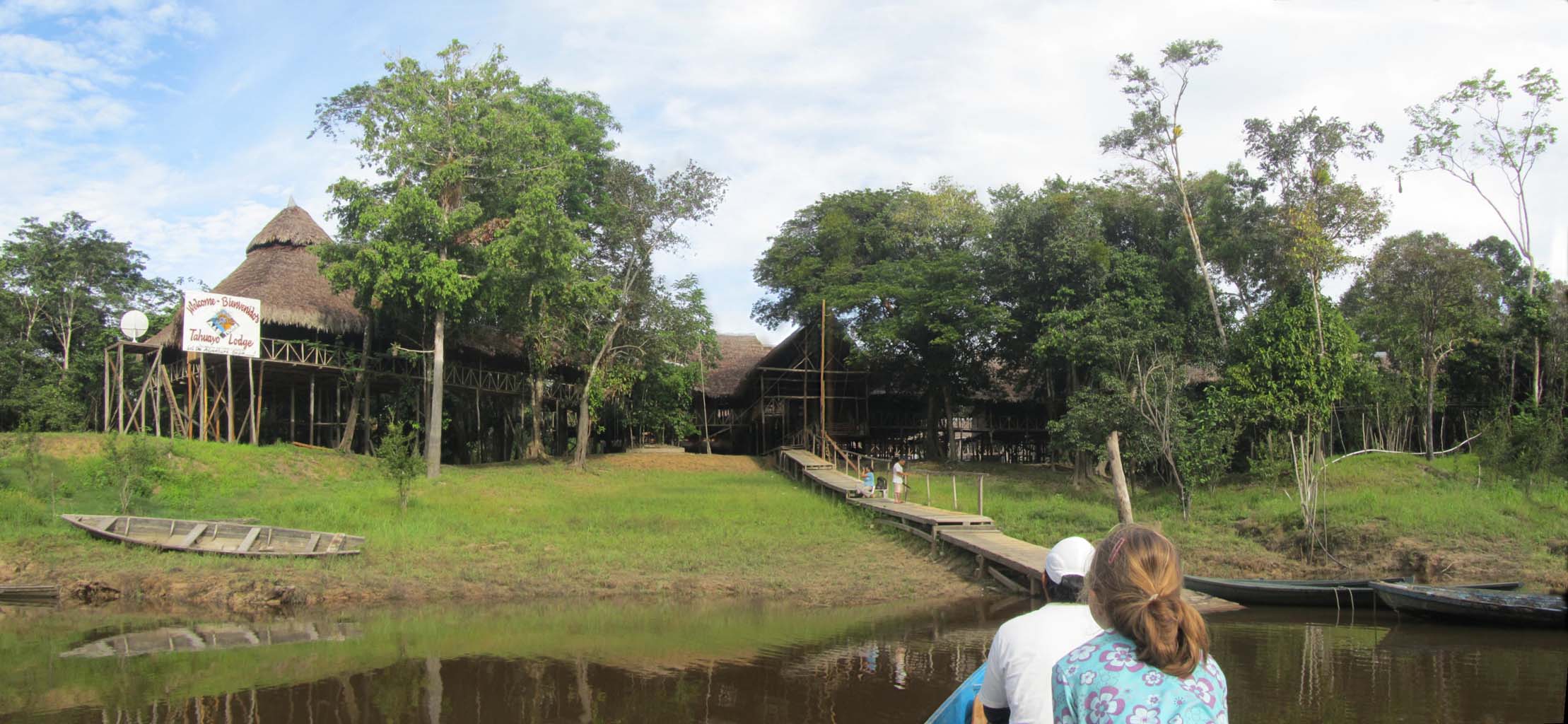
Weninger was not very communicative. When we asked if he had guided Norwegians before he answered “yes” and that was the end of that conversation. He was going to be our guide for the next 9 days and I was already seriously considering to ask for someone else. However, knowing myself and that first impressions sometimes are wrong I thought I would give him another 24 hours. Hélène thought I was being much to quick on drawing any type of conclusions. Luckily she turned out to be right.
In fact, Weninger turned out to be the perfect guide once he had warmed up to us. He was great with the children, extremely knowledgable, yet treated us more like equals then gringos he had to show around.
After a great lunch we headed into the jungle for an introductory walk of a couple of hours. Indiana Jones was ready for the jungle (appropriate movie music in the background):

Weninger was a fantastic wildlife spotter. He also communicate more freely now. He told us that he grew up very close to the lodge, in a village further up the river. He had also been a guide for the same company for 11 years. It seemed like he was more in his element now, and that he was himself once we got into the jungle. I quickly reset my impressions of him. Later, talking to one of the other guests at the lodge, we understood that we had made the right choice. We were seeing more wildlife, and that was after all one of the reasons for coming here.
This area is considered the most biodiverse part of the Amazon, and therefore the most biodiverse place on earth. There is a theory that this place was one of the few that were forested during the latest ice age, and therefore kept many of its species through that period. Most of the rest of the Amazon was dry desert. In the Tahuayo national reserve there are 16 different species of primates, 93 different non-flying mammals (yup, scientists exclude bats when counting in the Amazon, since there are so many different species of them) and about 540 species of birds.
During our hike we saw Pygmy Marmoset monkeys, the smallest monkeys in South America. This guy is 15 cm (6 inches) long (excluding the tail) and weighs about 140 grams:

These monkeys live primarily from tree sap. They bite holes in trees and then come back later to collect the sap. Here are some of their holes:

We also saw Red Titi Monkeys.

They were all the way up at the top of the canopy, some 30-40 meters above us. I quickly discovered that my 14x optical zoom compact camera was worth more than its weight in gold for this part of the voyage. The photo has been blown up so that the combined optical and digital zoom is 56x. Not bad for a compact camera, huh?
We saw an ant type, called fire ant, which is dangerous and which lives in symbiosis with a tree, They live in the tree and “patrol it” by walking up and down the outside all the time. They clean the bark of the tree and attack anyone trying to hurt the tree, To return the favor the tree produces a white liquid internally that the ants live off. If you grab the tree you will very fast have an arm full of ants. The really cool (well, to an observer, anyway) thing is that they don´t bite immediately. They wait for an ant messaging chemical, a pheromone, to be released. Then they all bite you at the same time! Nature is a cool thing.
Weninger told us that the natives previously used this tree as one of the most serious punishments. The culprit would be tied to a tree and not released until unconscious.
Iseline got a little bit too close to the tree and Weninger stopped her with a firm arm. When she was told that the ants were very dangerous I could see that she got a small shock. It was a challenge to get her to hike in the jungle for the next couple of days, but she did come with us and really enjoyed it.
Another ant type we saw was the army ant. A strange creature. They form a nest made up of the ants themselves every night. During the day they march through the jungle looking for food, sometimes attacking and plundering ant colonies they find on their way. They are the ant world´s plundering vikings.When they march they form a line and move rapidly. It really looks like a highway. Weninger told us that the colonies can number a million ants, and that the first arrive at their nightly destination quite early and start forming the nest . When the last arrive it is just the time when it gets dark. When they need to cross gaps some of the ants form a bridge with their own bodies to let the others pass. Did I mention that nature is a cool thing?
This photo has been taken without a flash. You can see which ants are standing still and creating the bridge, while the others run by.

Here´s an even more impressive bridge, taken with the flash this time:

The river is at its lowest now. Rain season has just started, but the rain is late this year. The area we walked in is submerged for large parts of the year. Weninger took our picture by the roots of a tiny tree:

We saw a bullet ant. The second largest ants in the world. They live in colonies of about a hundred. They are called bullet ants because being stung by them feels like being hit by a bullet. They pump a neurotoxin into your flesh. Nice. On the Schmidt pain scale the bullet ant is rated as the highest of all insect stings. This little buddy is 3 cm (1 1/4 inch) long. Normally I would add a finger for scale, but not this time:

We also saw some caterpillars who seemed to be doing some group hug thing:

There were termite nests everywhere:

It´s striking how many things have spines. There must have been pretty hard evolutionary pressure here to avoid being eaten by animals. This is a nice little tree trunk. Please do not fall on the tree:

When we got back the sun was starting to set. I quickly got out my fishing rod and tried out some lures. No luck.

I asked Weninger how they fish here, and he told me they put a piece of raw chicken or beef on a hook. I knew what I was going to try in the morning. Weninger told me I just had to speak to the cook and he would prepare bait for me. I went over to the kitchen and learned a new spanish word: “carnada.” Obviously it must mean meat used for bait. I would use it much during the next week.
At the dinner table the kids and I sang the Norwegian “happy birthday” song for Hélène, to much amusement for the other guests. Hélène turned 41 today. Weninger asked me why I hadn´t told Paul, the founder of Amazonia Expeditions, that Hélène had her birthday when we arrived. They would have prepared a surprise for her. Well, why didn´t I? Sigh, bad husband again.
Eirik
—–




